Ferdinand Berthoud Chronométre FB 3SPC: a Watch for Today Right Out of History (and possibly another GPHG winner)
Have you ever wished you could have a piece of art or some amazing machine from hundreds or thousands of years ago, but built today with modern materials?
I often struggle with this very problem as I see things that were created in centuries past and would absolutely love to have a modern version. But I don’t always want a version that feels modern or loses all the original intent and period aesthetic, I simply want a version that I can know is made to the level of perfection, quality and reliability available with today’s materials and machinery.
There might be those who argue that many craftsmen and artists of the past made things in ways that we have since lost, and their technology wasn’t much different than now.
That is indeed true in some cases, and many creations would necessarily require different techniques today since we don’t even know how the original was made. But for something like the Antikythera mechanism, we most certainly could make it today with better materials and a more consistent construction, yet following the exact design of the original (if we actually knew what it looked like).
The Roman aqueducts are built in a way that we could not have replicated up until now because the method for producing the exact type of concrete was lost until its rediscovery in the last year, but I’m okay not having one of those in my backyard.
In most cases, I am referring to scientific devices, machines, and tools that were made to the best specifications available but were handicapped by material and manufacturing methods. Antique pocket watches are a good example, I and many others will have beautiful and intricately made timepieces from centuries past that upon close inspection reveal obvious limitations in capability.
This is not to say that the craftsmanship wasn’t as good or possibly better than today since they needed to create everything entirely by hand compared to the high-tech tools we have today. The machines that were able to be created were, and still are, absolutely marvelous in the context of both today and their own time. But inventions like shock protected jewels, functionally perfect synthetic jewels, modern precision alloys for springs, wheels, and pivot shafts, not to mention the modern standardized screw threads, all combine to make a plethora of improvements to historical calibers.
There are some modern brands and independent watchmakers building watches in such a way as to follow the past as closely as possible while using the modern world to improve where possible, and there may be no better example than Ferdinand Berthoud.
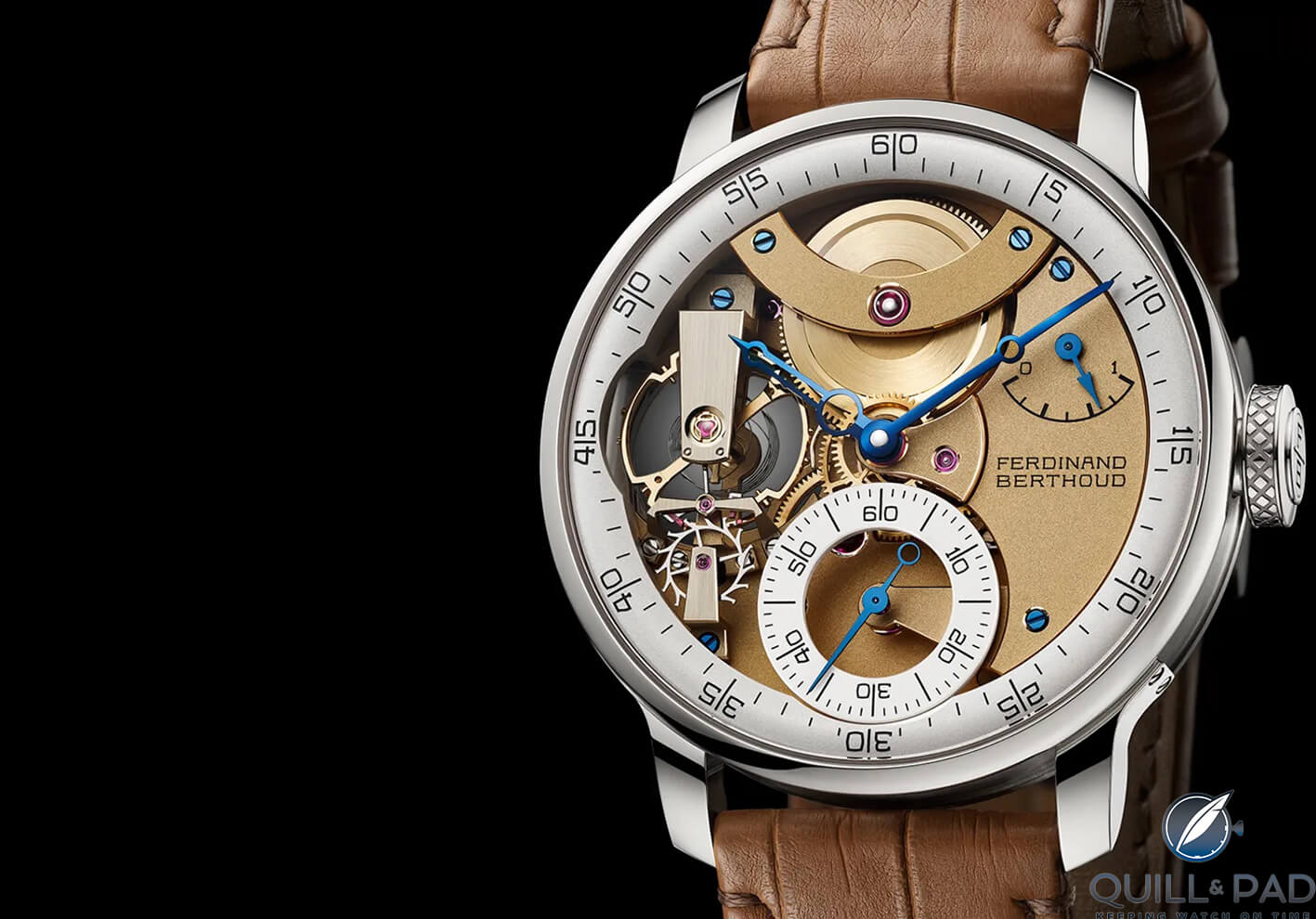
Ferdinand Berthoud Chronométre FB 3SPC
Ferdinand Berthoud is solely focused on creating watches from nearly three centuries ago with everything we have at our disposal today. In what might be their best example of this to date, the most recent release, the Chronométre FB 3SPC, demonstrates the exact thing I had in mind when I imagined making a new pocket watch based on a historical piece but made to today’s standards.
Ferdinand Berthoud Chronométre FB 3SPC
The Chronométre FB 3SPC represents an entirely new collection and a core part of the Ferdinand Berthoud ideology, impeccable horology based on the history of the brand’s namesake, all built to the highest modern standards.
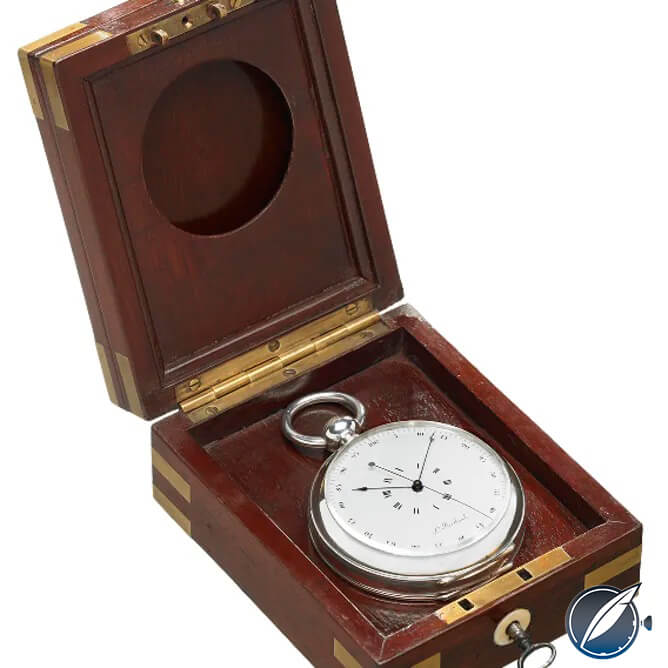
No. 26 decimal watch signed by Louis Berthoud in 1793
Inspired by a specific model (the No. 26 decimal watch signed by Louis Berthoud in 1793) and a specific time period of watchmaking innovation, the FB 3SPC is a stunning journey into horological history.
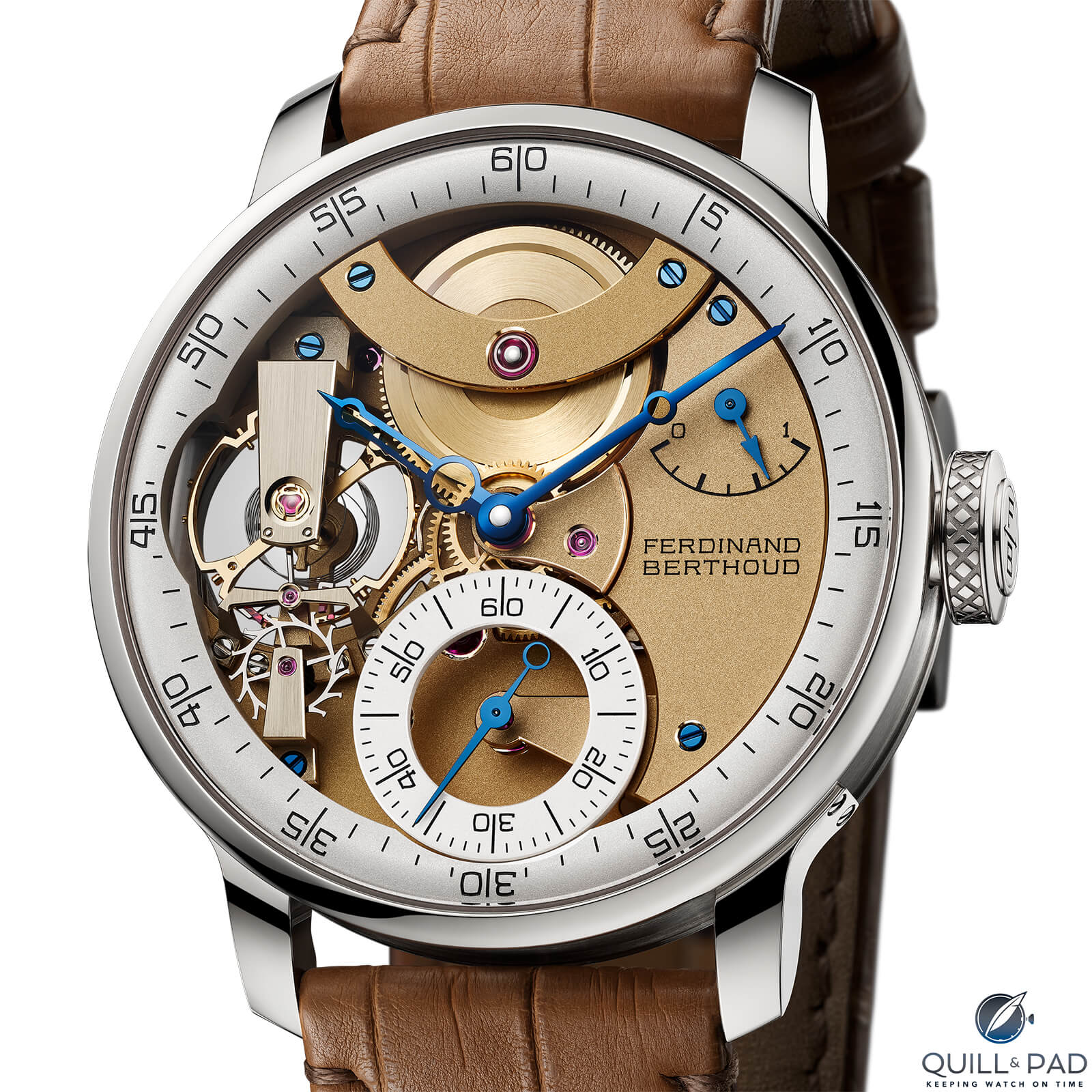
Ferdinand Berthoud Chronométre FB 3SPC
Displaying central hours and minutes with off center seconds and a power reserve indicator at 2:30, the FB 3SPC gives over half of its dial up for movement exposure. The balance, escapement, and mainspring barrel are all exposed with corresponding cocks and bridges shaped in a true-to-form historical style.
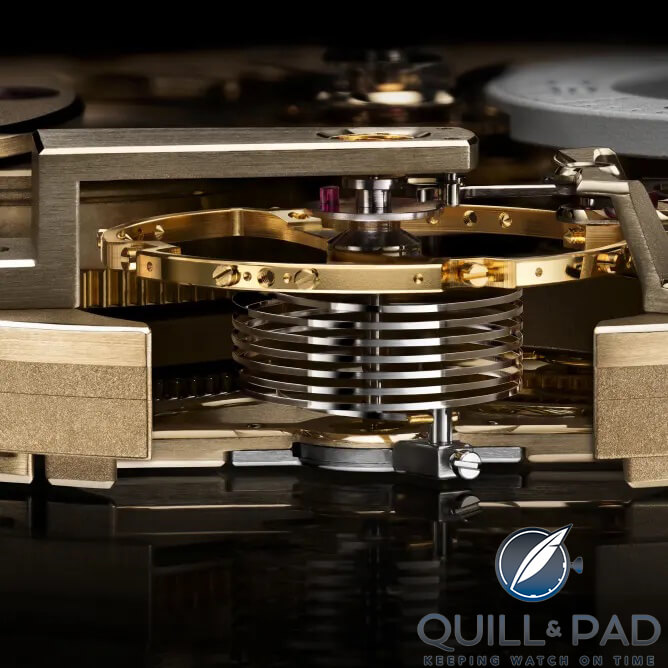
Cylindrical hairspring of the Ferdinand Berthoud Chronométre FB 3SPC
The balance sports a cylindrical hairspring mounted beneath the balance wheel, moving the escapement to the top of the dial, on display for all to see.
Adjacent to that, the sub seconds ring is cantilevered over the dial, mounted to the pivot cock supporting the seconds pinion and helping the construction to feel open and uncluttered. This lack of clutter extends to the rest of the dial. A large, blasted surface with only the name of the brand and a small power reserve scale takes up the entire right side of the watch, with the broad arching bridge supporting the mainspring barrel finishing off the top. No extraneous decoration was applied to the bridge or the barrel, keeping it clean and classical.
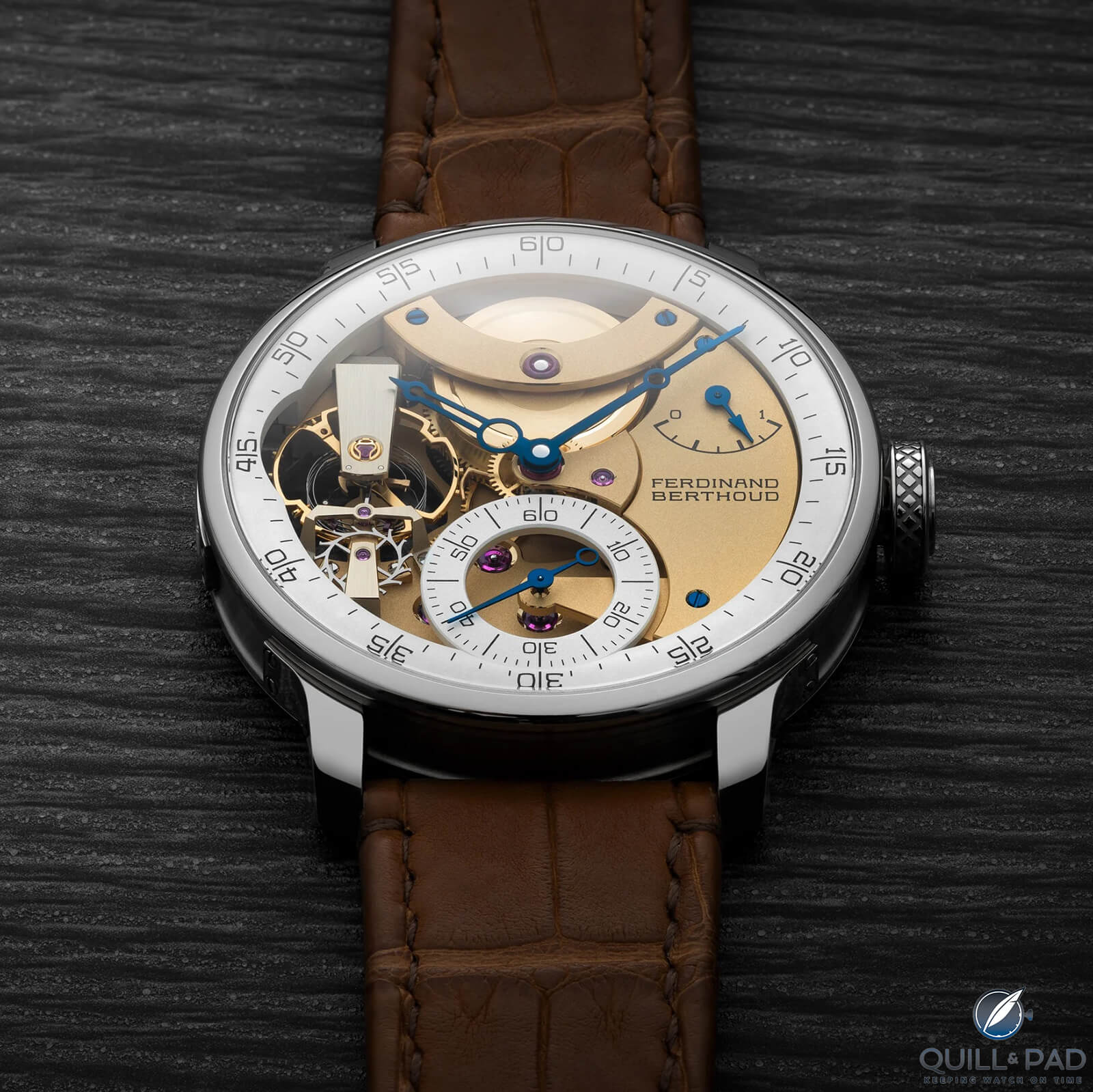
Ferdinand Berthoud Chronométre FB 3SPC
On the edge, a ring acts both as a bezel and the hour and minute display, with small cutouts for the balance wheel and seconds dial ring. The ring is subtly domed like a De Bethune dial instantly making this my favorite design feature. The actual case bezel is tiny, keeping the dial open and expanding nearly from edge to edge. For a 42.3 mm case, this makes it feel rather expansive, mirroring the pocket watch inspiration yet still allowing for wearability on the wrist.
Modernity slips through
Once you flip the FB 3SPC over you finally get a chance to glimpse the movement and it does not disappoint, though it does look more modern than the front of the watch. With 6 bridges all nested together like a jigsaw puzzle amongst the main plate, it lacks the historical aesthetic of a large 3/4 or full main plate, but it doesn’t detract from the intended aesthetic. The pieces are all finished extremely consistently and simply, blasted surfaces and polished bevels around all the edges.
The area directly below the balance wheel and the third and fourth wheels are cut away, as well as the mainspring barrel, exposing the entirety of that part of the mechanism, but everything else is beneath their respective bridges.
Though nearly all the bridges meet the main plate in perfectly matched edges, some areas around where wheels meet have been cut away to show the engagement of various gears. I have always loved this little sneak peek method because it feels like maintenance or inspection ports on large machinery, something that helps the average wearer appreciate the construction even more.
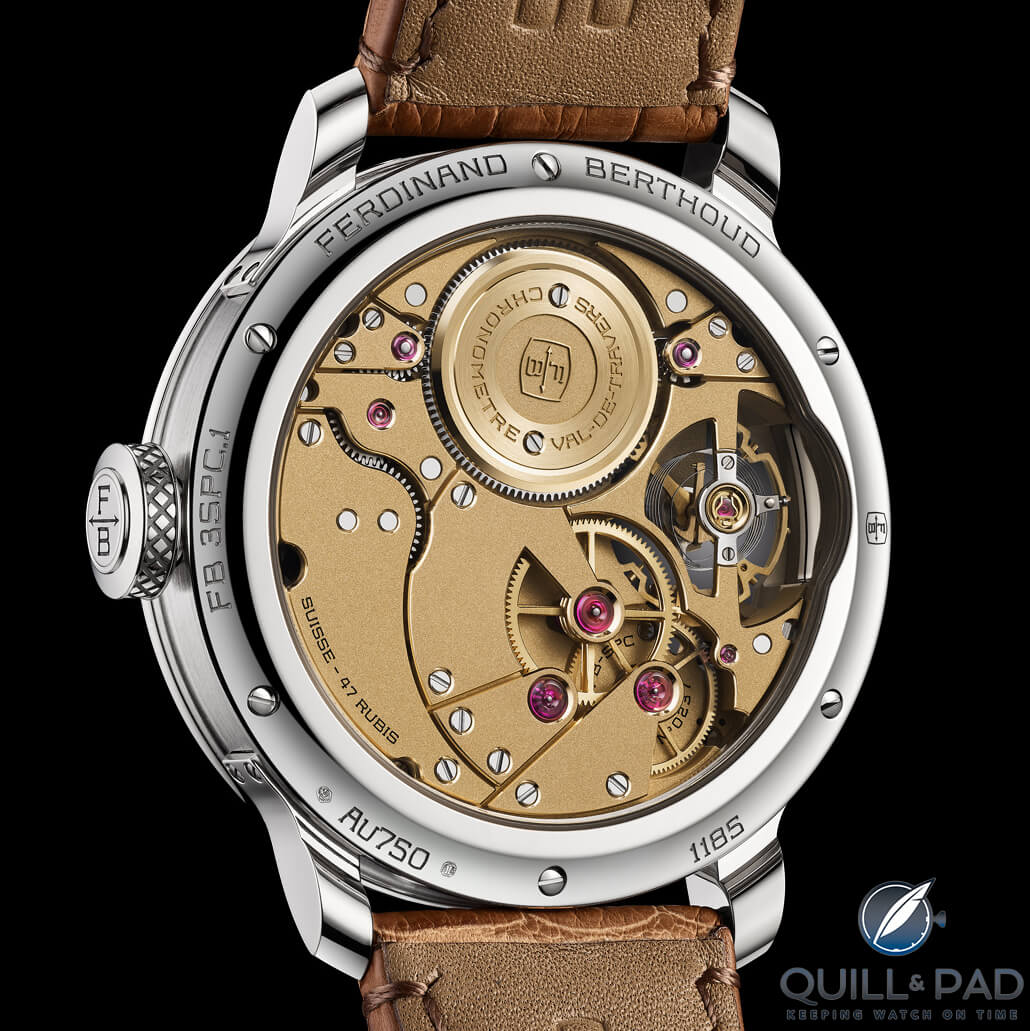
Back of the Ferdinand Berthoud Chronométre FB 3SPC
A bridge supporting the crown wheel and the ratchet click are mirrored on both sides of the mainspring barrel, providing some lovely symmetry to the movement. As stated, the rear is akin to the front of the watch with very simple finishing and a lack of extra details. The caliber identification is nestled beneath the fourth wheel, and the ruby count and country of origin are very minimally engraved along the very edge of the keyless works bridge.
Chronometry is key
On top of the mainspring barrel is an engraved plate with the Ferdinand Berthoud logo surrounded by the words Chronometre and Val-de-Travers, the location of the manufacture and proof of the chronometer designation of the movement. As is to be expected, the development of this caliber required it to meet chronometer specifications and get COSC: ISO 3159 certified. This is the personal requirement of Ferdinand Berthoud’s founder, Karl-Friedrich Scheufele, who wants all timepieces made by the brand to meet and exceed basic COSC standards.
It took two years to develop the movement and months just to fine-tune the design of the balance and cylindrical hairspring which required four adjustment screws, eight load screws, and the perfect number and spacing of coils for the hairspring. The goal was to meet not only the basic COSC requirements but also the Fleurier Quality Foundation protocols, and to double the length of the COSC testing period.
With that much effort going into chronometry, it only makes sense that there is an additional stop-seconds mechanism that allows you to stop and set the watch down to the exact second once the crown is pulled.
In the minds of Ferdinand Berthoud, chronometry only matters when it can be utilized, but that doesn’t mean that it can’t look good while doing it. The perfectly wound cylindrical hairspring is a feat of engineering development, so the brand did what anyone should do: highlight it!
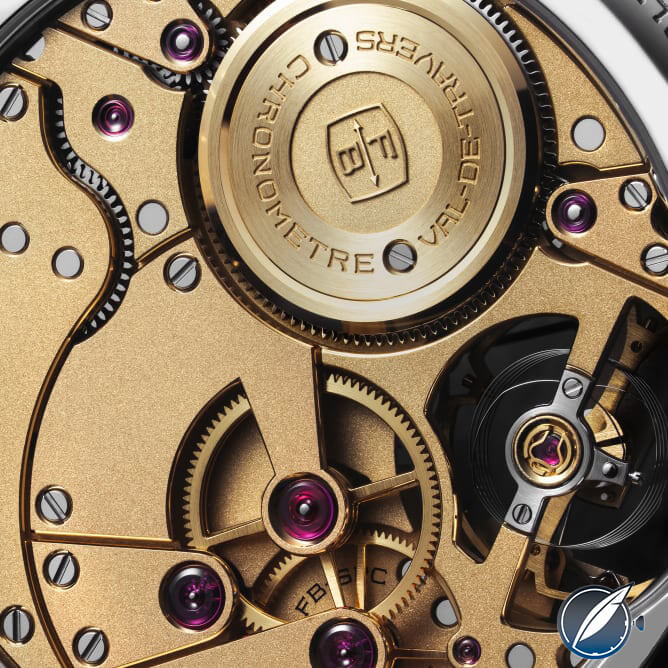
Movement details of the Ferdinand Berthoud Chronométre FB 3SPC
The open dial and opening on the rear of the movement allows for appreciation from the top and bottom, but Ferdinand Berthoud went one step further and added a sapphire window to the side of the case.
Highlight the highlights
Sapphire windows have been seen on a few other high-end timepieces and I will always love their inclusion. They allow in more light so you can better see the balance and hairspring while on the wrist, and viewing it from the side gives an even better appreciation of the hairspring construction and size.
The window is held in place with a screwed bezel, matching the method of attachment for the lugs. All 4 lugs are screwed directly to the case instead of being fully integrated, something that might sound more difficult but actually allows more flexibility in design, finishing, and assembly.
These details all combine to make a watch that perfectly captures what a chronometer movement from 1793 might look like if done today but without straying from the original (albeit fictional) design intent. The most modern aspect of the design is the typography developed specifically for the Ferdinand Berthoud brand, yet even that appears as if it could be from a much older age than today.
I would argue that the Chronométre FB 3SPC might be the best historically inspired wristwatch on the market today, even if it looks nothing like the timepiece that inspired it.
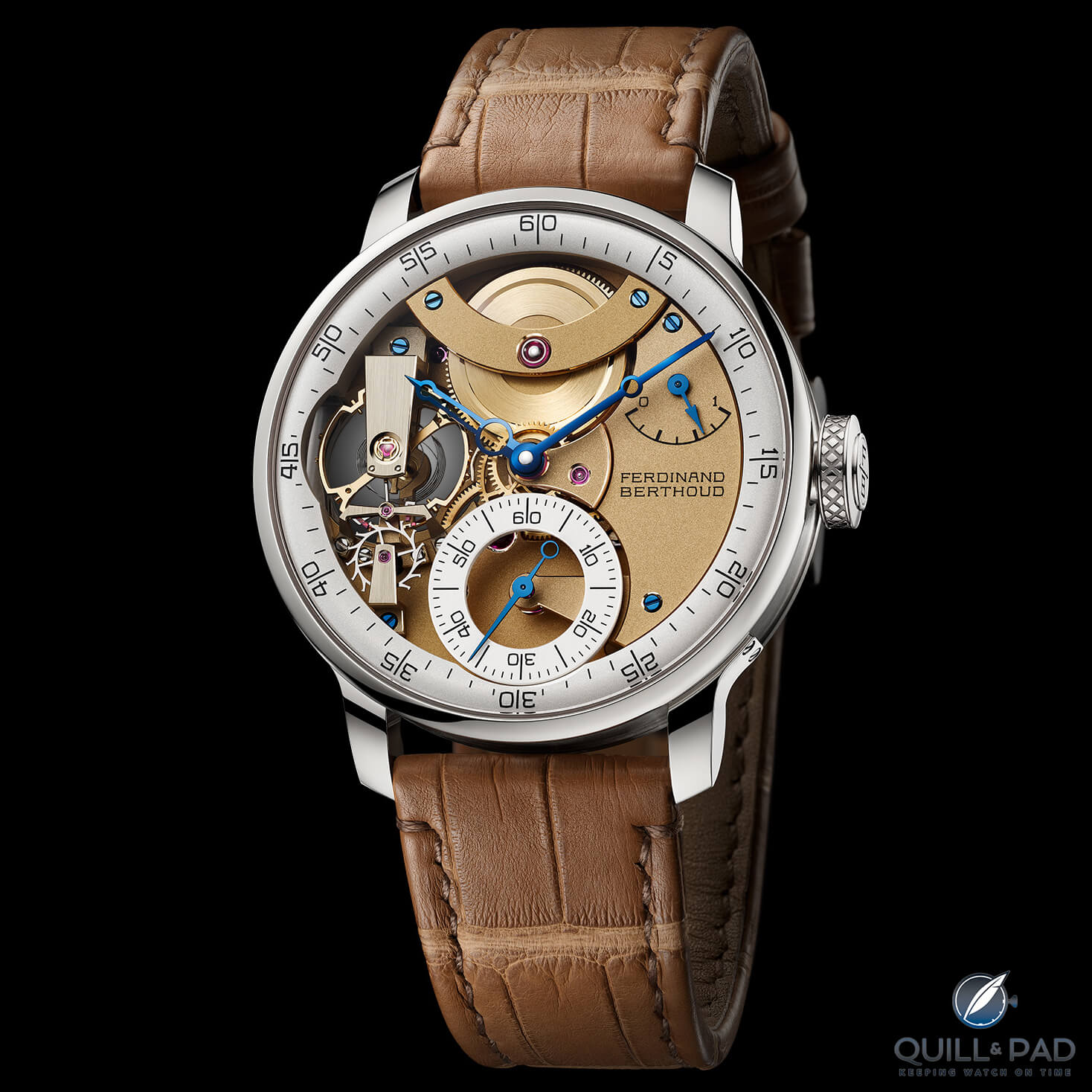
Ferdinand Berthoud Chronométre FB 3SPC
Given the continued success of Ferdinand Berthoud to create watches that capture the love and admiration on collectors, engineers, and us journalists, I’m quite sure that this isn’t the last we have seen from the new FB 3SPC collection. I’ll be pulling for it to take home some trophy at the next edition of the GPHG, and looking forward to what will come next!
Since the Chronométre FB 3SPC passed the rigors of the COSC: ISO 3159 tests, I’ll do my best to break it down!
- Wowza Factor *9.93 It doesn’t even take a closer look for this watch to extract a wowza from even the most cynical watch fan!
- Late Night Lust Appeal * 99.3 » 973.800m/s2 The weight of history is enough to keep you up all night lusting for this piece, but the style, mechanics, and finishing sure do help!
- M.G.R. * 68.8 While this movement is missing the fusée and chain and tourbillon often found in a Ferdinand Berthoud, the simplicity and accomplishment of the cylindrical hairspring and COSC certification is enough for any WIS to see how geeky this movement is!
- Added-Functionitis * Mild I’ve said it before and I’ll say it again, a power reserve indication is the most useful added function for a manually wound watch, full stop. But it is only one additional complication, so the horological swelling really isn’t too bad to need anything more than children’s strength the Gotta-HAVE-That cream!
- Ouch Outline * 11.9 A pounding headache! Different types of pain bother people differently, and a headache is something I truly loathe. So, any headache ruins my day, but a pulsing and pounding headache is enough to make me wish for the sweet release of unconsciousness. Still, I would suck it up and gladly suffer through a headache every day for a week if I was able to get my hands on this watch!
- Mermaid Moment * Oh, the hairspring! There are so many things to fall head over heels for with Ferdinand Berthoud, and this piece is no different. But seeing that cylindrical hairspring is enough to make a guy start calling chapels to book a day!
- Awesome Total * 908.96 Start with the hours of power reserve (72) and multiply by the thickness of the case in millimeters (9.43), then add the number of components in the movement (230) and you will discover a historically prescient awesome total!
For more information, please visit www.ferdinandberthoud.ch/en/chronometre-fb-3spc.
Quick Facts Ferdinand Berthoud Chronométre FB 3SPC
Case: 42.3 x 9.43 mm, 18k white or rose gold
Movement: manually wound FB-SPC caliber, 72-hour power reserve, 21,600 vph/3Hz
Functions: Hours, minutes, seconds, power reserve
Limitation: Limited by production capacity to 25 per year
Price: 140,000 CHF
You might also enjoy:
Ferdinand Berthoud Is Reborn With FB 1 Thanks To Chopard’s Karl-Friedrich Scheufele
Ferdinand Berthoud Chronomètre FB 2RE: Change Is Round
Ferdinand Berthoud FB 2RSM.2-1: A Sensational ‘Apprentice Piece’
Ferdinand Berthoud FB 1L: When History Has A Date With Progress
Leave a Reply
Want to join the discussion?Feel free to contribute!



I think your “Awesome Total” should have the thickness in the denominator. Thinner watches take more engineering than thick ones (Yes, I’m looking at you Omega!). How about (power reserve in hours + (5 * Number of complications)) / (Thickness in mm) ?
You read it here first!
And I too like the cylindrical hairspring. But I’d also like a bit more contrast with the hands so one can, you know, actually tell what time it is!